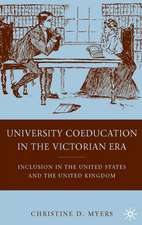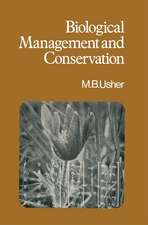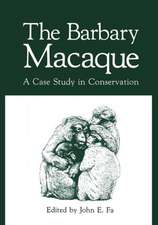Conservation Biology: For the Coming Decade
Editat de Peggy L. Fiedler, Peter M. Kareivaen Limba Engleză Paperback – 31 oct 1997
| Toate formatele și edițiile | Preț | Express |
|---|---|---|
| Paperback (1) | 959.82 lei 6-8 săpt. | |
| Springer Us – 31 oct 1997 | 959.82 lei 6-8 săpt. | |
| Hardback (1) | 1243.15 lei 6-8 săpt. | |
| Springer Us – 31 oct 1997 | 1243.15 lei 6-8 săpt. |
Preț: 959.82 lei
Preț vechi: 1170.51 lei
-18% Nou
Puncte Express: 1440
Preț estimativ în valută:
183.71€ • 189.32$ • 155.09£
183.71€ • 189.32$ • 155.09£
Carte tipărită la comandă
Livrare economică 03-17 martie
Preluare comenzi: 021 569.72.76
Specificații
ISBN-13: 9780412096617
ISBN-10: 0412096617
Pagini: 533
Ilustrații: 576 p. 50 illus.
Dimensiuni: 178 x 254 x 23 mm
Greutate: 0.86 kg
Ediția:2nd ed. 1998
Editura: Springer Us
Colecția Springer
Locul publicării:New York, NY, United States
ISBN-10: 0412096617
Pagini: 533
Ilustrații: 576 p. 50 illus.
Dimensiuni: 178 x 254 x 23 mm
Greutate: 0.86 kg
Ediția:2nd ed. 1998
Editura: Springer Us
Colecția Springer
Locul publicării:New York, NY, United States
Public țintă
ResearchCuprins
Section I Saving Species Through Population Biology and Viability Analyses: A Morass of Math, Myth, and Mistakes?.- 1 The Analysis of Population Persistence: An Outlook on the Practice of Viability Analysis.- 2 Rare Plant Demography: Lessons from the Mariposa Lilies (Calochortus: Liliaceae).- 3 Evaluating Extinction Risks in Plant Populations.- 4 Physical Effects of Habitat Fragmentation.- 5 Reintroduction of Rare Plants: Genetics, Demography and the Role of Ex Situ Conservation Methods.- Section II Broad Brushes and Taxonomic Tours: Summaries of the State of the Natural World.- 6 Conservation and Management of Species in the Sea.- 7 Reptilian Extinctions over the Last Ten Thousand Years.- 8 Conservation Status of the World’s Fish Fauna: An Overview.- 9 Challenges in Insect Conservation: Managing Fluctuating Populations in Disturbed Habitats.- 10 An Australian Perspective on Plant Conservation Biology in Practice.- Section III Habitat Degradation and Ecological Restoration: Hubris, Hegemony, and Healing.- 11 Critical Issues in Invasion Biology for Conservation Science.- 12 Challenges and Approaches for Conserving Hawaii’s Endangered Birds.- 13 Picking Up the Pieces: Botanical Conservation on Degraded Oceanic Islands.- 14 When Do Genetic Considerations Require Special Approaches to Ecological Restoration?.- 15 Replacing Endangered Species Habitat: The Acid Test of Wetland Ecology.- Section IV When Conservation Meets the Real World of Economics, Politics, and Tradeoffs.- 16 The Economics of Biological Diversity Conservation.- 17 The Patagonia Challenge: Melding Conservation with Development.- 18 Tropical Agroecology and Conservation Ecology: Two Paths Toward Sustainable Development.- Section V New Technologies and Novel Perspectives for the Next Generation ofConservation Biology.- 19 Using Molecular Genetics to Learn about the Ecology of Threatened Species: The Allure and the Illusion of Measuring Genetic Structure in Natural Populations.- 20 Conservation Endocrinology: Field Endocrinology Meets Conservation Biology.- 21 Global Climate Change and Species Interactions.- 22 Contributions of Spatially Explicit Landscape Models to Conservation Biology.- Epilogue A Retrospective “Gap Analysis”.










